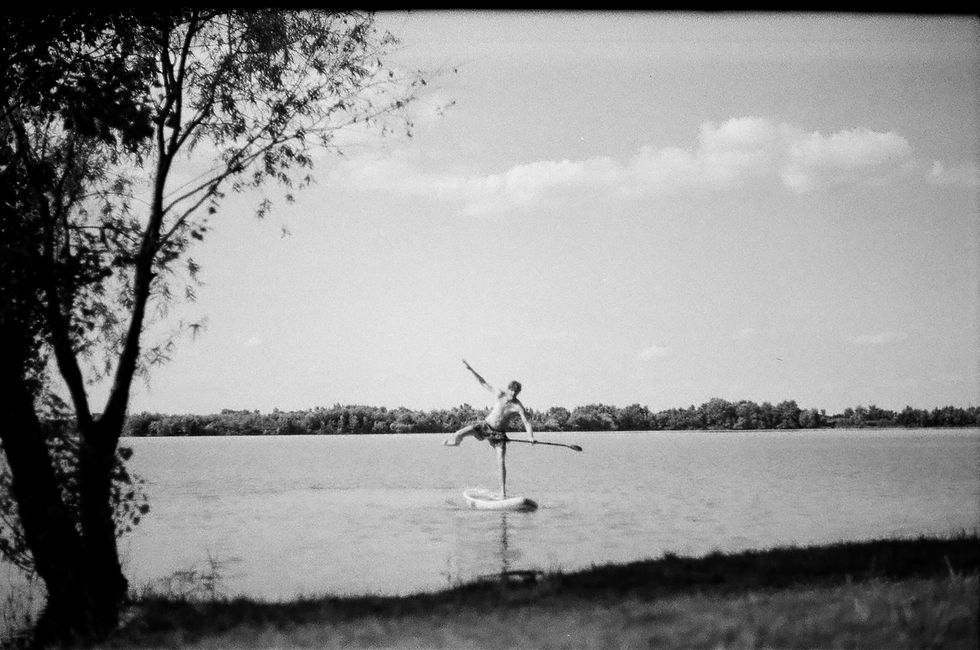Why the name 'Wanted Sound'?
- Ben Scott
- May 9
- 3 min read

In sound and audio production, there is an emphasis on getting rid of all the unwanted sound and noise—be it hum from a guitar amp, bleed into mics from other sound sources, background noise, or airplane sounds in nature recordings. Whatever it is, there’s a lot of it—“it” being these unwanted sounds that we are surrounded by. We surround ourselves with them constantly—none more so than that sound we cannot hear but must surely feel.
I'm talking about electromagnetic smog emitted from all electronic devices. We are now always attached to at least one! The devices that connect to radio waves are very interesting to me. This interference moves like an animal, or the sea—invisible, inaudible. It’s like another dimension. Mics can pick it up, and it is truly unwanted—most of the time—unless you’re keeping an ear out for it.
This electrosmog can provide you with extra insight into how the device works. You can listen to motors coming alive, batteries glitching as they charge, electric pylons that provide constant high-power energy to the grid—so powerful, you can really feel how much damage it could do to you in one false move.
The static from lightning discharged in storms hundreds of kilometres away reminds me of something resetting—a static release. It’s picked up as such a small, yet sharp pop or click, but you know it’s gonna be more than 1.21 gigawatts! Somewhere.
So, I’ve still not answered the question: why Wanted Sound?
Well, all sound is wanted. And useful. And beautiful. Some, more beautiful than others. Some are surprising—in both good and bad ways. Take a waterfall, for example... it’s a pretty awful white noise. Yet when you are there, at the falls, you feel in awe at its power and at nature’s beauty. It is a good example.
A similar sound is that of the static of a TV not tuned into any channel. You’d hurry to turn this off—but not the waterfall. The waterfall is considered better, no doubt—and rightly so. A large waterfall contains so many frequencies all at once. Try, next time, to hone in on a certain chunk of frequencies—a band, like an EQ. Listen to the bass—focus on it thundering. Listen to the highs ringing out. Walk away from the waterfall—listen to the sounds of everything else creep back into your ears. Beautiful.
Most of nature’s noises are wondrous and very appealing. They can help us to relax—even the violent sounds of crashing waves in a storm, or howling winds. Terrifying too. But generally, never as disturbing as man-made racket. Such as lawnmowers, motorways, people! We tend to want to get away from them.
Machines and human interference have their place though—and mainly for this reason: rhythm. Machines repeat, and so do creatures of habit. The patterns they generate can be fascinating to record and listen to. They embody changing times, culture, and, well, us. They tell a story about us—who we are.
So, all sounds are wanted. I'm not saying they’re all going to be nice. But we need them, and we need to document them. We can keep them in their raw format; we can modify them to create something new.
I enjoy collecting them all, like Pokémon (I’ve never actually collected any). I try to collect outside of the box—listening out for the unusual. It pays to be selective when recording, but it’s more important to be brave and confident. Go after it. It’s not silly. It’s a wanted sound!
I’m talking a lot to myself here—I realise that. Not everyone records sound. Not everyone wants to. But those of you who are blessed with a pair of working ears, I advise you to listen to the sounds around you. You can connect on an emotional level with every single sound. It—and you—have the potential for a deep connection. A very special one that you won’t forget. It will become a feeling, and a memory.
If the sound is a familiar place, a familiar face, or creature, then it will mean even more. Listen to the beauty. It is also in the ear of the beholder.





Comments